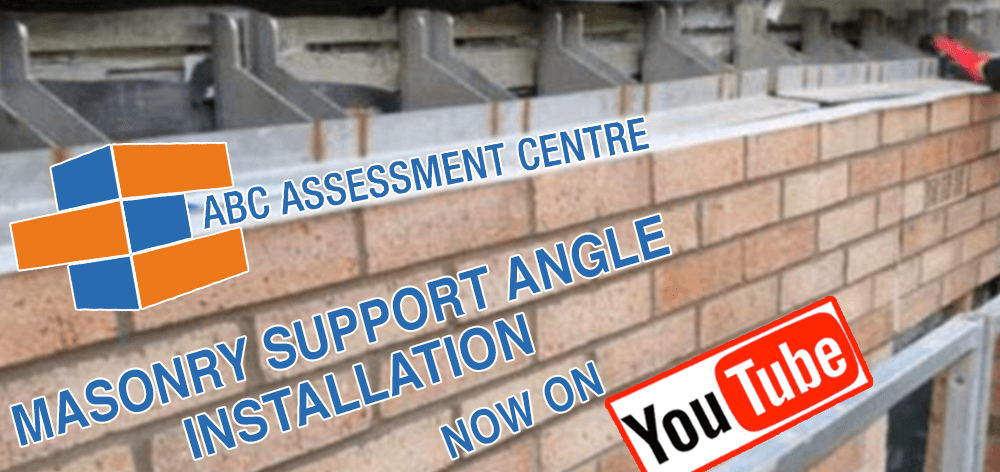“Wait a second, we’re bricklayers, not steel fixers! Somebody else does this on site, not me! What has this got to do with laying bricks?” All very common reactions to this week’s featured modern masonry competency: masonry support angle installation.
And, traditionally, they would have a point. Bricklayers haven’t always got involved with the steel fixing aspect of installing masonry support angles and windposts, for example, as this has been subbed out to specialist contractors.
But what some people fail to realise is that building methods and practices are changing, therefore the UK construction workforce must adapt to the latest building innovations and solutions in order to remain fully compliant and adequately skilled.
Not to mention the sharp increase in the number of large-scale construction projects in recent times to meet demand for development and re-development. Of course, many of these large residential, commercial, industrial, education and infrastructure projects will need a whopping great amount of masonry support installed… so who is going to install this vast square metrage of masonry support over the next 5/10/15 years or more?

Who Is Masonry Support Angle Installation Training Relevant For?
Here at The ABC Assessment Centre, we strongly believe that arming bricklayers and construction industry contractors of the future is key to meeting the demand for skilled labour; hence why we’re delivering masonry support angle installation training as part of our CITB funded bricklayer training programme in Further Education.
By upskilling in this area of competency from a younger age, the next wave of operatives trained at The ABC Assessment Centre’s partner colleges will offer their employers a wider skill set, as well as take ownership of a greater scope of work onsite. The result of this is becoming more knowledgeable about the overall construction process and, consequently, being more involved in more aspects of the build compared to those trained to simply jump on the line.
After all, it is the bricklayer whose gauging must coincide with the datum height for the masonry support angle supplied by the engineers and it is the bricklayer who must lay the pistol bricks above the shelf and build off it. Furthermore, bricklayers are increasingly responsible for everything else in the cavity including insulation and cavity barriers, so why wouldn’t they also fix the masonry support too?
Indeed, this logic is not lost on today’s specialist brickwork subcontractors, who are pricing for the masonry support package on jobs more and more, as they want this to stay ‘in house’. This is especially relevant to member employers of The Association of Brickwork Contractors, many of whose installer operatives have been upskilled and have received CITB accreditation through The ABC Assessment Centre.
What Are Masonry Support Angles And How Do You Install Them?
If you didn’t already know, masonry support angle systems provide lateral support for the outer leaf of masonry all the way around the perimeter of high-rise buildings. They form horizontal expansion joints that allow for differential movement, as well as distributing the load of the facade brickwork above back to the internal structure of the building.
They are usually installed on every other storey of high-risk buildings, however they are sometimes specified for every floor where the masonry load is significant and the design requires it, and it’s vitally important that their installation is in line with manufacturers’ specifications in order for them to be effective.
Only Training Provider To Deliver Accredited Masonry Support Angle Installation Training
The 1-day course delivered exclusively by The ABC Assessment Centre in the UK goes into more detail on all aspects of the installation process, including the underpinning theory and emphasising the necessity for high quality workmanship.
The course ensures learners are aware of the theory behind why and where masonry support angles are installed, the various different types of shelf angle and masonry support solutions available, how systems can accommodate structural tolerances and limits of adjustment, how to read masonry support drawings, hazards and defects associated with non-compliance, as well as best practice installation to manufacturers’ specifications.
Check out the full description of The ABC Assessment Centre’s Masonry Support Angle Installation short course, as well as a list of the topics covered in the Course Details tab, by clicking on the button below:
Next In YouTube Channel Video Series
One thing we’ve done in recent times to add to our programme of 16 short courses is to create “How To” install videos for each of the practical skills. This way, we can supplement our excellent face-to-face training with top quality video content available 24/7 from any mobile device, tablet or computer.
To give Specialist Brickwork Contractors, Further Education Colleges, Main Contractors, Designers, Specifiers, Manufacturers and Suppliers a glimpse into how the launch of our YouTube channel could be valuable to their business and individuals’ professional development, we’ve created teaser videos to accompany the long-format install guides.
The next in our series of videos is – yes, you guessed it – how to correctly install masonry support angle systems. Filmed on The ABC Assessment Centre’s and ACS‘s patented training frames and featuring our very own Centre Manager Simon Livett and Brickwork Trainer/NVQ Assessor Ian Mitchell, we’re really happy with the finished result below…
If you like what you see, why not like the video and subscribe to the channel for all future content! Simply click the button below to go to our YouTube channel:
How Do I Get Access To The ABC Assessment Centre YouTube Channel?
The channel will have 2 types of subscription – basic and paid. Basic subscription will give you access to the promotional “How To” install videos as well as other content we’ll upload intermittently, while the paid subscription will be based on an annual fee to receive all the long-format videos and exclusive content we add over the course of the year.




